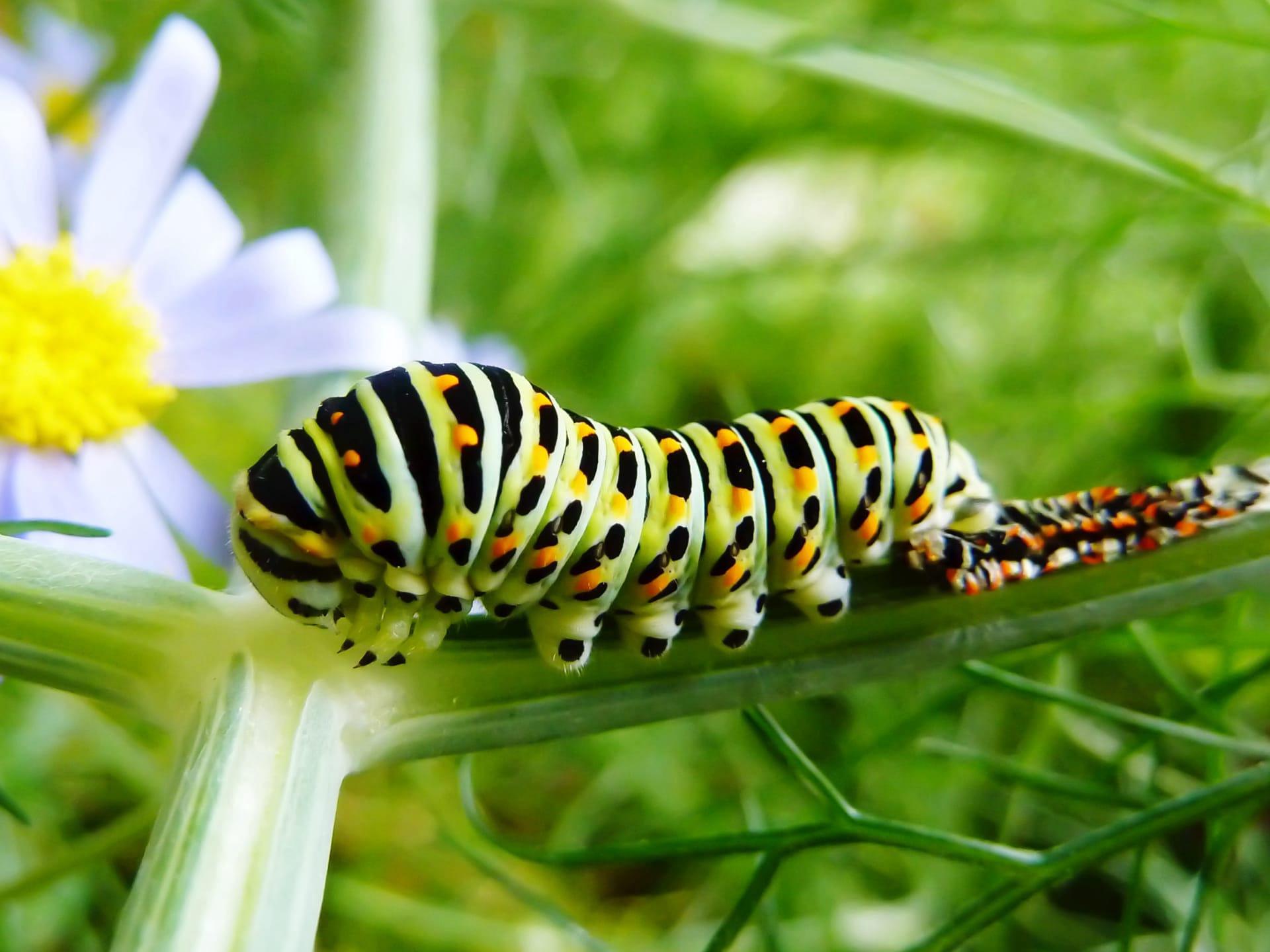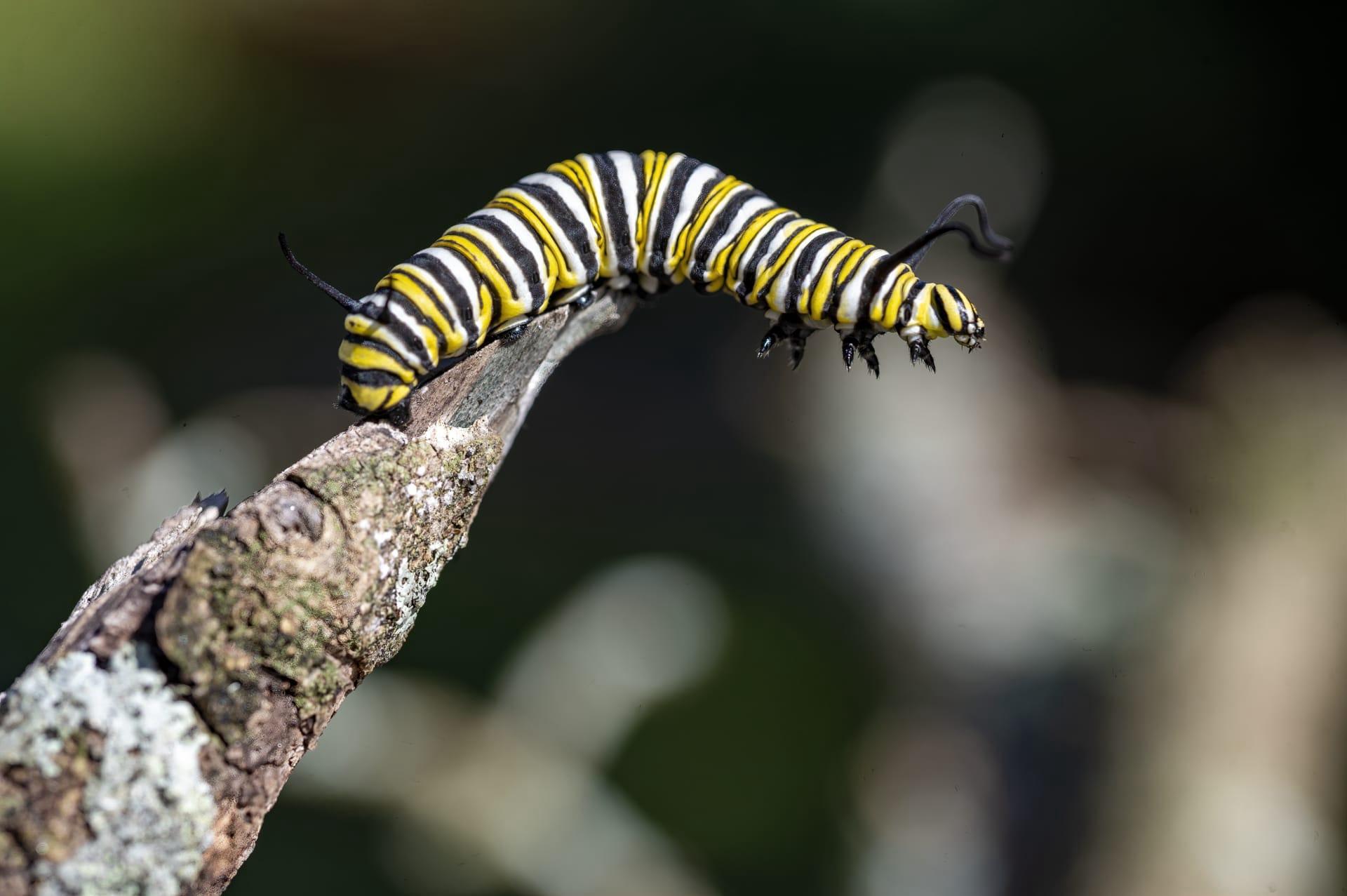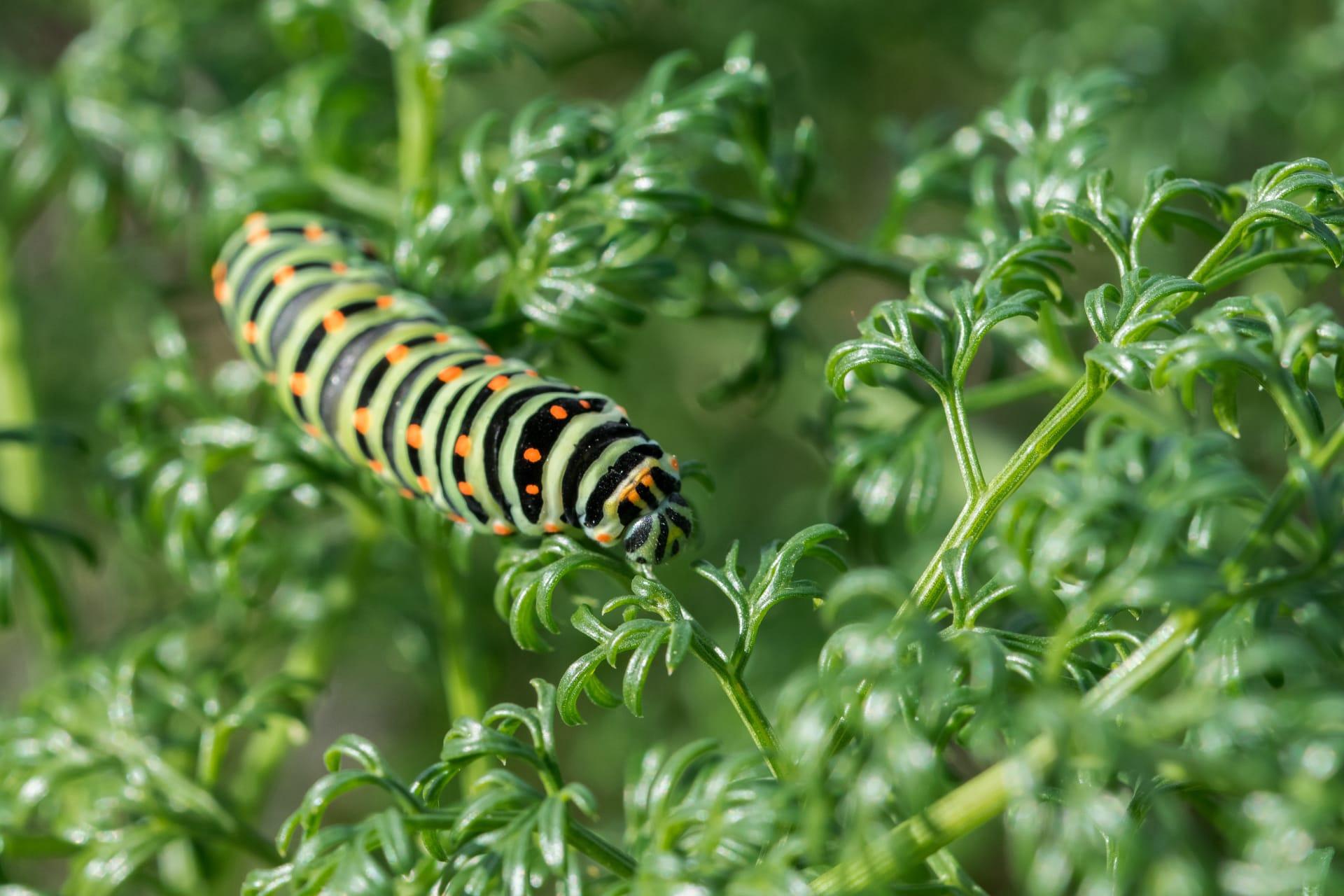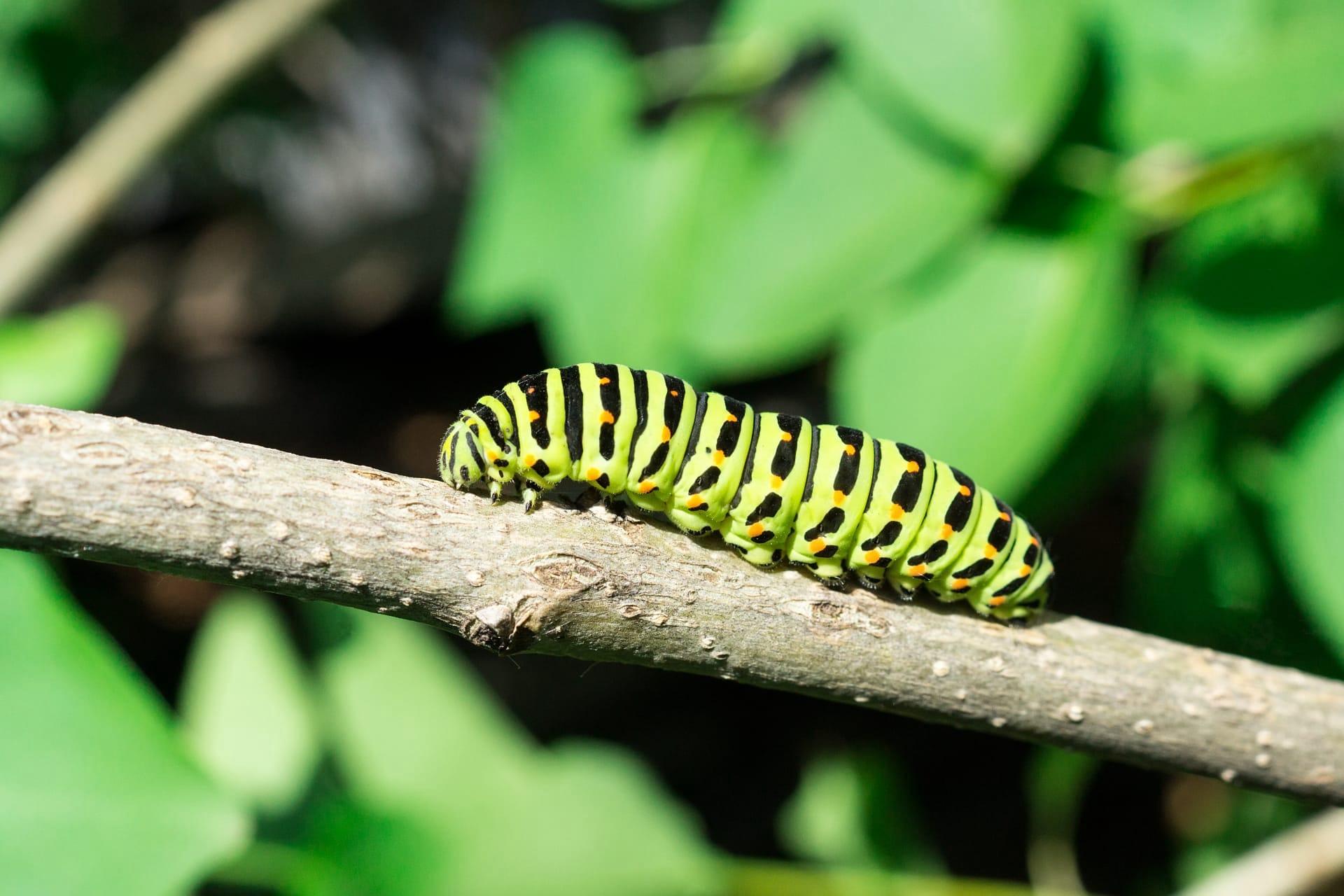1
Monarch butterfly caterpillars (Danaus plexippus) showcase a unique and vibrant pattern that serves more than just an aesthetic purpose. These striking black, white, and yellow bands are a warning signal to predators about their toxicity. The caterpillars consume milkweed plants, which contain toxic compounds called cardiac glycosides. These toxins are sequestered in the caterpillar's body, making them unpalatable to birds and other predators. This defensive mechanism is so effective that only a few bird species, like the black-backed oriole and black-headed grosbeak, have evolved the ability to eat them without ill effects.
Another fascinating aspect of these caterpillars is their incredible growth rate. During the larval stage, which lasts about two weeks, a monarch caterpillar can increase its body mass by over 2,700 times. Starting at a mere 2 millimeters in length and weighing less than 0.5 grams, they can grow up to almost 5 centimeters long and weigh around 1.5 grams. This rapid growth is fueled by their voracious appetite for milkweed leaves, which they consume almost non-stop. Their ability to rapidly gain mass is crucial for their survival and transformation into the monarch butterfly.

2
Monarch caterpillars have a specialized set of antennae-like tentacles that serve distinct purposes. At their head, they possess a pair of longer tentacles, which are primarily sensory organs helping them navigate and explore their environment. In contrast, the shorter pair of tentacles at their rear end is primarily for defense. When threatened, the caterpillar will wave these tentacles to deter predators, a behavior that is enhanced by their bright, warning coloration.
These caterpillars also play a crucial role in their ecosystem. They are considered a keystone species in North American prairies. As a primary consumer of milkweed, they help regulate the growth of these plants, which can be invasive in some areas. Additionally, their presence attracts predators and parasitoids, which in turn helps maintain the balance of other insect populations. Interestingly, the decline in monarch caterpillar populations due to habitat loss and pesticide use has sparked significant conservation efforts, highlighting their importance in biodiversity and ecosystem health.

3
The monarch caterpillar's gut is specially adapted to handle the toxic compounds in milkweed. They have evolved a unique mechanism that allows them to sequester these toxins in their exoskeleton, effectively using the plant's defense for their own protection. This adaptation is a remarkable example of co-evolution between the monarch caterpillar and the milkweed plant. While the milkweed evolves toxins to deter herbivores, the monarch caterpillar evolves mechanisms to not only tolerate these toxins but also use them as a defense against predators.
Interestingly, the monarch caterpillar's diet is exclusively milkweed, making them a specialist species. This specialization has its advantages, as few other herbivores compete for milkweed, but it also makes them highly susceptible to environmental changes that affect their sole food source. Their reliance on milkweed means that factors such as climate change, habitat destruction, and the use of herbicides on milkweed plants have a direct impact on monarch populations. This specialized diet has made monarch caterpillars a flagship species for conservation, symbolizing the importance of plant-insect relationships and biodiversity.

4
Communication among monarch caterpillars is an intriguing aspect of their behavior. While they are mostly solitary, they use chemical cues to avoid overcrowding on a single milkweed plant. These chemical signals, left on the leaves through their feet and frass (caterpillar droppings), indicate to other caterpillars that a plant is already occupied. This behavior prevents overconsumption of a single plant, which could lead to resource depletion and increased visibility to predators. It's a subtle yet sophisticated form of communication that ensures their survival and growth.
Another interesting fact is the role of temperature in their development. Monarch caterpillars are cold-blooded, and their growth rate is heavily influenced by ambient temperature. Warmer temperatures generally accelerate their development, leading to faster growth and earlier pupation. However, extremely high temperatures can be detrimental, causing stress and even mortality. This temperature dependency makes them sensitive to climate change, as shifts in temperature patterns can significantly impact their life cycle and migration patterns.

5
Monarch caterpillars exhibit a unique survival strategy during their pupal stage. Just before they transform into a chrysalis, they engage in a behavior called "wandering." During this phase, they leave the milkweed plant and travel up to 20 meters away to find a suitable spot to pupate. This behavior reduces the risk of predation and parasitism during their vulnerable pupal stage. It also prevents overcrowding and depletion of resources, as each chrysalis is spaced apart from others.
The silk they produce is another fascinating aspect. Monarch caterpillars spin a small pad of silk on the underside of a leaf or other structure to attach themselves before transforming into a chrysalis. This silk pad is incredibly strong and elastic, ensuring that the chrysalis remains securely attached throughout its development. This silk, produced from a special gland in their mouth, is crucial for their successful metamorphosis into a butterfly, showcasing the intricate and complex nature of their life cycle.